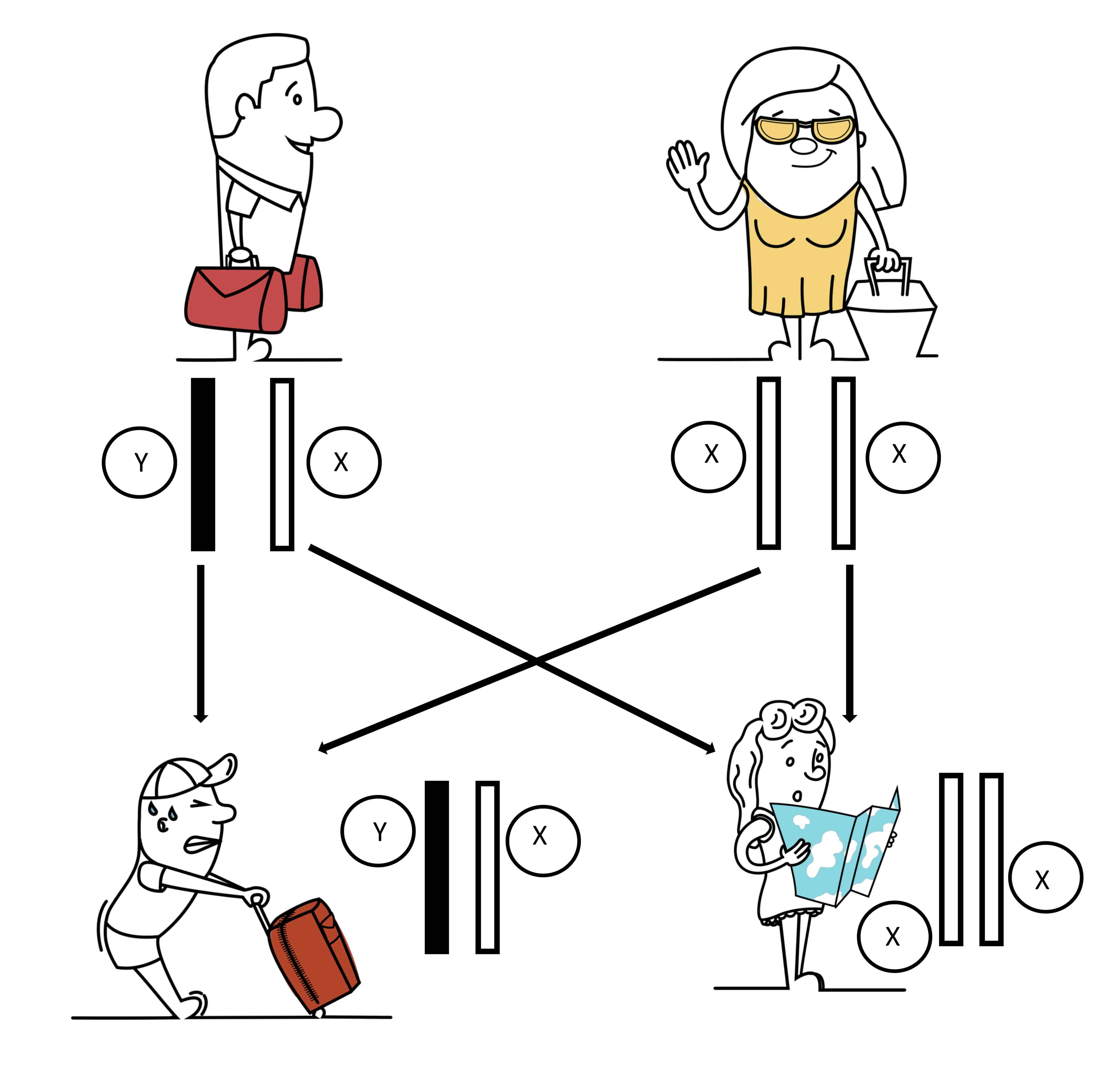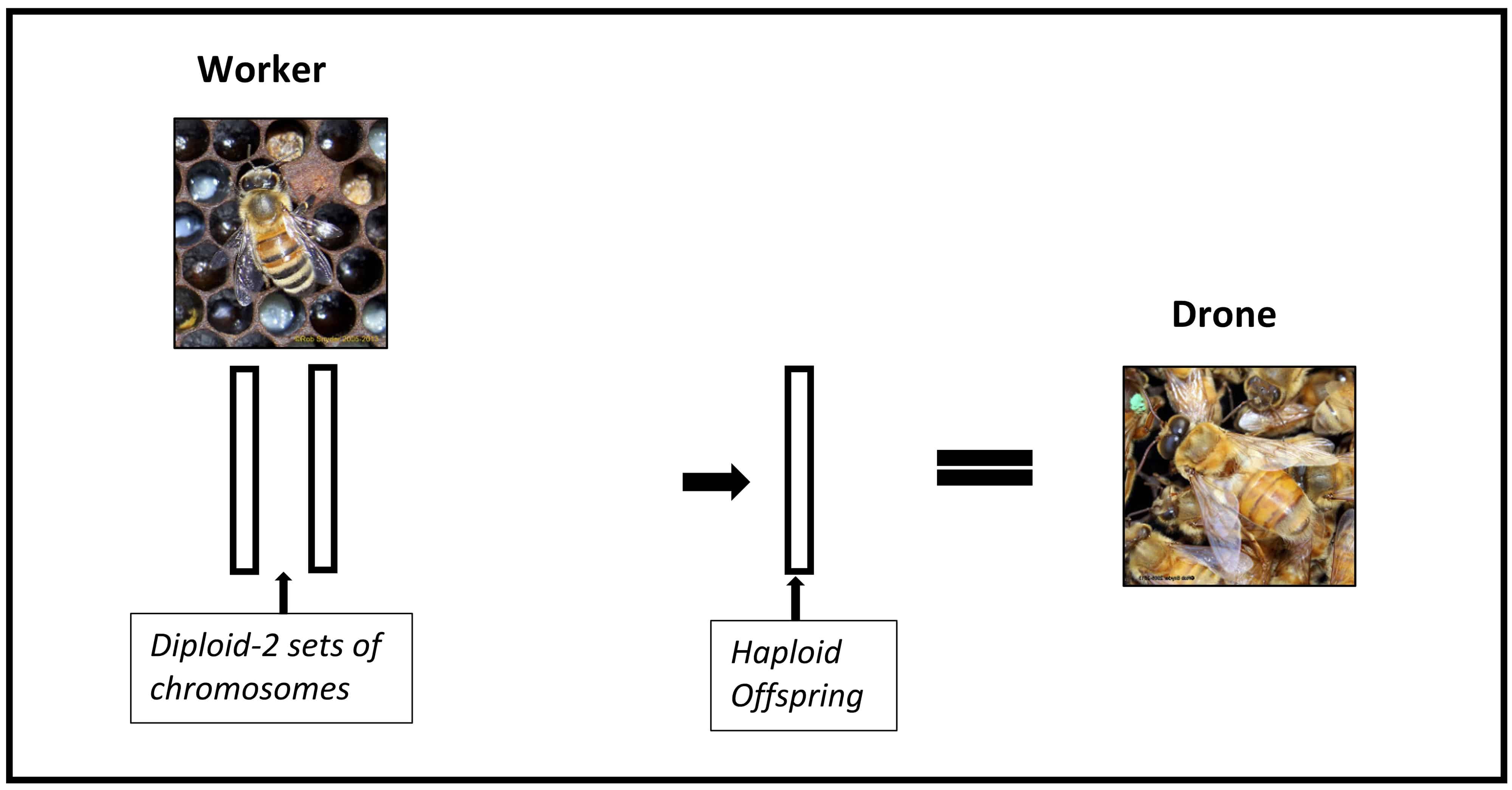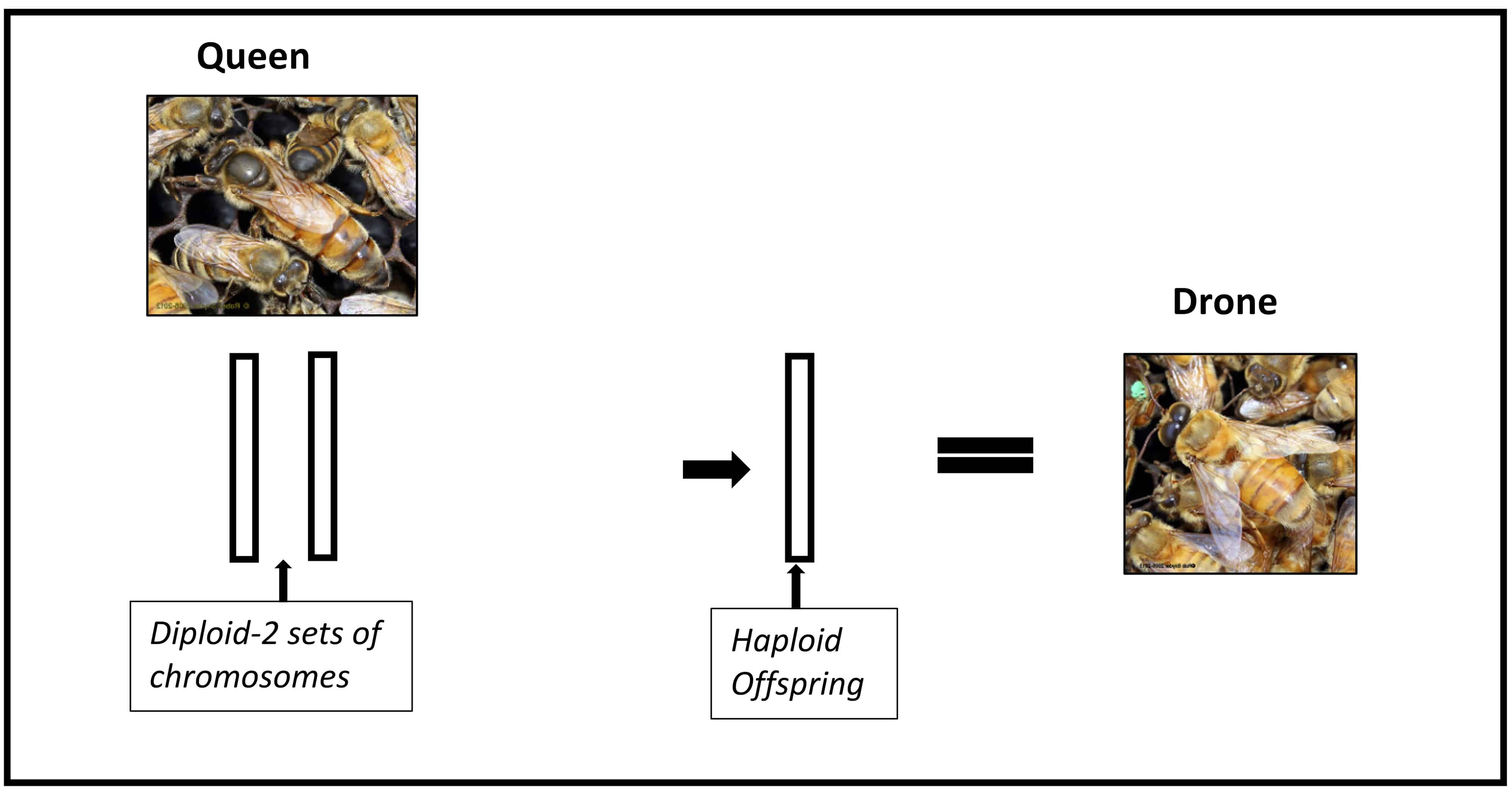I have always been fascinated with queens and workers. In fact, I spent my master’s degree studying the mechanisms that produce queens and workers. I want to spend the next three articles in this and upcoming issues discussing the complex processes that govern how an egg becomes either a worker or a queen. You can look forward to these three pieces:
- The Genetic Book of Life-The basics to honey bee genetics
- How genetics and the environment shape honey bee workers and queens
- The differences between queens and workers
Honey bees have a system of sex determination (male drones versus female queens or workers) known as haplodiploidy. This differs from human sex determination in several ways (Figure 1). With humans, both males and females carry two copies of every chromosome (they are both diploid), one inherited from the father, and one from the mother. Human males result because they have a specific sex chromosome (Y chromosome) that females lack. With honey bees, queen bees have a specialized compartment within her body to carry sperm she obtained from earlier mating events, and she determines whether or not to fertilize each egg as it is being laid. Males develop from unfertilized eggs, and therefore only carry a single set of chromosomes (haploid) and females develop from fertilized eggs and possess two copies of each chromosome (diploid), Females receive DNA from both parents, while males receive DNA from just their mother. A fun BIP Fact: Male Honey bees do not have fathers
Figure 1: The picture above depicts human sex determination. Each bar represents a sex chromosome. Also, the arrows show how these chromosomes are donated to future offspring. Humans have what is known as XX/XY sex determination system. In this system, sex is determined by a pair of sex chromosomes. While humans have a total of 23 pairs of chromosomes, 2 (the X and Y) determine human sex. Females typically have two of the same sex chromosomes (XX) and males typically have two different kinds of sex chromosomes (XY).
Figure 2: Depicted above is the genetics of honey bee workers and queens. The bars represent chromosomes. Female workers and queens result from fertilization, which is the act of fusing female queen eggs with male drone sperm. This combination results in a diploid egg and contains chromosomes from both the male drone and the female queen. While I am just showing 1 chromosome for simplicity, honey bees have 16 chromosomes (versus 23 for humans). In this example, the diploid offspring would inherit a chromosome from the drone’s set and the queen’s set, so a “white” chromosome and a “black” chromosome. Unique to honey bees, diploid females can develop into either a queen or worker. This depends upon the nutrition they receive during development.
Figure 3: The picture above is the genetics of a laying worker. A laying worker has underdeveloped reproductive traits, so they cannot mate with drones. Because of this, they cannot fertilize eggs and produce female workers or queens. The laying workers can, however, produce unfertilized haploid males. This is a last-ditch effort for the colony to pass along its genetic material to future generations.
Figure 4: The picture above shows a queen laying drone eggs. Queens can either lay fertilized or unfertilized eggs. This typically depends upon cell size as queens lay unfertilized drone eggs into larger drone cells.
Figures 2-4 summarize the genetic differences between diploid females and haploid males. In order for females to develop, they need a different genetic recipe from both the mother and father. Diploid males are a great example of how important these different genetic recipes are in sex determination. In certain cases, diploid males can result if they receive identical chromosomes from both the father and mother. This can result from very inbred populations, and results in infertile males (Figures 2).
Queens are the only individuals in the colony that can produce both diploid female workers or queens and also produce haploid males. I will touch on why workers cannot produce diploid females in a later blog, but I describe in some detail in Figures 3-4. Workers can lay drones because workers are able to lay unfertilized eggs. Essentially, workers cannot mate or store sperm, so they produce just haploid males.
Figure 5: The picture above shows a highly inbred population. In this example, a queens mated with their sibling brother, which share identical chromosomes. The example diploid offspring above received a white chromosome from its father and a white chromosome from its mother, which results in diploid males. These males do not survive in nature because the colony removes them immediately. However, diploid male removal does result in spotty brood patterns post-mating.
Haplodiploidy is both interesting and integral for honey bee colonies, but why should the average beekeeper need to know this information. There are a few reasons: 1) this information helps us understand and improve mating systems, 2) sex determination allows us to understand why honey bees cannot tolerate inbreeding, 3) this information can help us understand why and how queens fail, and 4) genetics is an important aspect of beekeeping, but going forward, genetics will be an integral component towards making beekeeping more sustainable.
Honey Bee genetics is fascinating. If you enjoyed reading this blog as much as I enjoyed writing it, keep an eye out for the next installment on how genetics and the environment shape honey bee workers and queen.
Cheers!
Garett Slater
Midwest Tech-Transfer Team
University of Minnesota
Bee Informed Partnership




